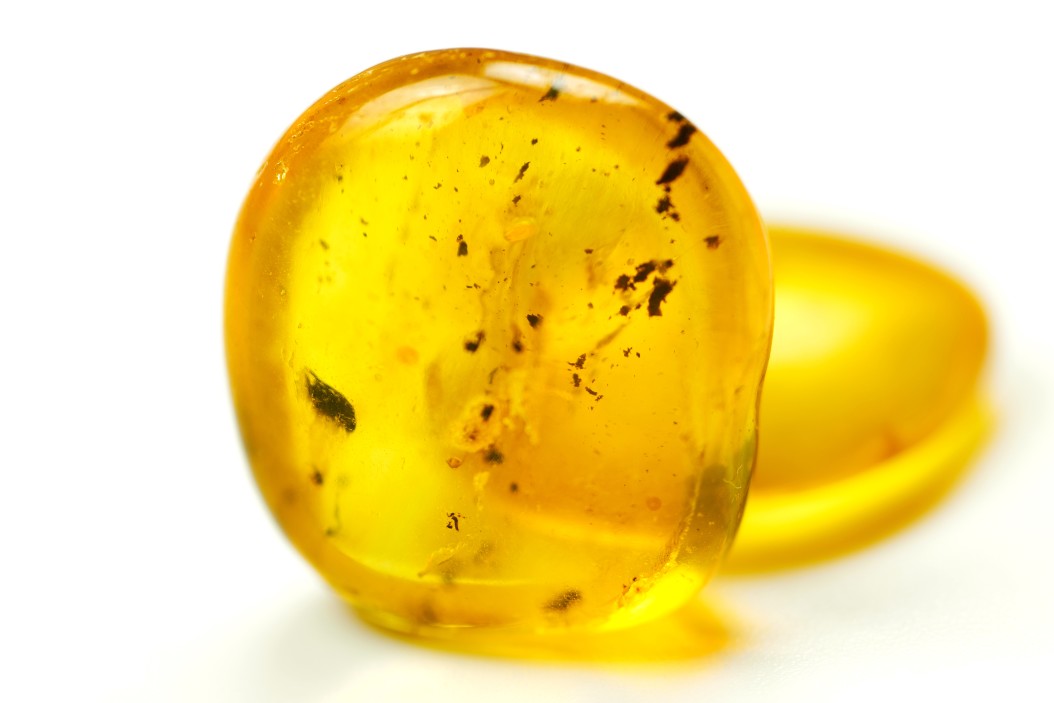
Baltic Amber: How to Spot a Fake
Baltic amber is not your typical gemstone. Some would argue it is not one at all since it is technically organic material—it is a mixture of fossilized tree resin, succinic acid, and oils. For the purposes of this feature though, we will certainly consider it a gemstone because to us, Baltic amber is certainly a gem!
Thought to be between 40 and 60-million-years-old, these golden amber pebbles have always sparked imagination and were thought to be a magical gemstone. Baltic amber is warm to the touch, emits static electricity when rubbed, and gives off a pleasant aroma when burned. Though it does not contain the crystalline structures found in other gemstones, it contains the highest amount of succinic acid, which determines its high quality.
Ensure Authenticity of Baltic Amber for Health Benefits
Succinic acid is also known as “the spirit of amber” and is often used as an antibiotic and curative agent. It is also rich in antioxidants and combats free radicals or interference with normal heart function. Often worn close to the body as a necklace or bracelet, Baltic amber warms through skin contact. It releases succinic oil, which is absorbed into the skin as a natural anti-inflammatory. For hundreds of years, this non-typical gemstone provides the therapeutic properties often sought for teething babies or reduced joint pain.
With all the healing properties of Baltic Amber, you will want to be sure you have the real deal. Buying Baltic Amber from a reputable dealer is always a great place to start, but there are several other ways that you can check the quality of your amber.
If It Is Not Baltic Amber, What Is It?
As you consider the following tests, keep in mind that fake amber is most often made from:
- Copal
- Glass
- Phenolic resin
- Cellulose nitrate
- Plastic
The primary reason you want to be sure your Baltic amber is authentic is that the healing properties, realized through the succinic acid levels, can only be found in genuine Baltic amber.
7 Simple Tests for Checking Baltic Amber Authenticity
1. Baltic Amber Visual Test
The quickest way to evaluate your amber is to give it a close visual evaluation. Baltic amber naturally has imperfections; common ones are tiny cracks or air bubbles. If all the beads are the same size, perfectly round, or similar in appearance, you may want to question their authenticity. With Baltic amber, each piece is unique and should not be perfectly round. As part of this simple test, note how the gemstone feels in your hand. One of the qualities that make it seem magical is that authentic Baltic amber feels warm to the touch.
2. Saltwater Test for Baltic Amber
This test is as simple as grabbing a cup of water and adding salt. The saltwater test should be limited to loose gemstones as this test is not suitable for metal on jewelry.
For the saltwater test you will need:
- 2 cups of warm water
- ¼ cup of salt
- Stir the salt into warm water until dissolved
When the salt has dissolved, drop in the loose gemstones. Authentic Baltic amber will rise to the top and float, while most fakes will sink quickly to the bottom. The saltwater test is a genuine authenticity test because Baltic amber is found floating and washed ashore in the Baltic Sea.
3. Rubbing Test to Check for Static
When genuine Baltic amber is charged, it emits static electricity. To charge the stone, you can wrap it in a cloth and rub for about one minute and then hold it near your hair. If the gemstone attracts strands of your hair, it is likely the real deal. If it does not become charged and instead becomes sticky, you are likely holding copal.
4. Hot Needle Test
Using a hot needle is a fast and effective way to check the authenticity of your Baltic amber. Heat a needle and, in a discreet place on the gemstone (like near a drilled hole for jewelry), stick the needle into the stone. If it only goes in slightly or cracks, it is most likely a natural Baltic amber stone. If the hot needle goes in easily and creates a strong burnt plastic or pine smell, it is most likely plastic or copal. One disadvantage of this test is that the hot needle will leave a burn mark on genuine amber.
5. Baltic Amber Scratch Test
Baltic amber is a softer gemstone, so you may only want to try this test with an inexpensive piece. The scratch test is effective in determining authenticity because real amber will get scratched by the metal, or even a fingernail, used in a scratch test. Glass or other fake representations of the gemstone will not scratch.
6. Drip Acetone Test
A definitive test is the acetone test. Drip a couple of drops of acetone (nail polish remover) on the surface of your amber gemstone. If it becomes sticky or the liquid takes on the color of the stone, you can be sure this is not genuine. Real Baltic amber will not be harmed or dissolved with this liquid.
7. Baltic Amber Scent Test
Scent tests are often highly effective because true amber has a specific smell. When warmed or burned, you should smell a distinct aroma of pine tree resin or a “salty tree,” while fakes will smell like burning plastic. This test could be a little more difficult for those who are not as familiar with the smell of pine resin and, while copal can smell similar, real Baltic amber will have a more pungent scent.
As you build your collection of precious gemstones and healing stones, you will want to know what qualities to look for in each one. Knowing the characteristics to look for in your chosen stone will reduce your chances of purchasing an imitation one. Understanding the healing and spiritual properties of each stone will contribute to the passion you have for your collection, in addition to knowing a reputable purveyor. Check your gemstones carefully for quality and authenticity, and you will have years of enjoyment, enlightenment, and healing from your natural stones.




